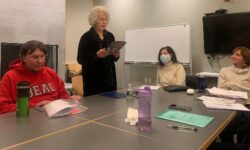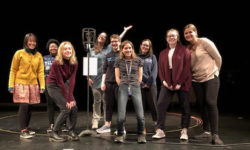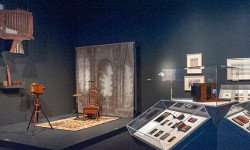[ccfic caption-text format="plaintext"]
By Laura Drinan
Hometown Weekly Reporter
Five hundred years ago, on October 31, 1517, Martin Luther distributed the “Disputation on the Power of Indulgences.” The Augustinian monk’s “95 Theses” challenged the Pope’s power and triggered the Reformation of the Christian church.
For the remarkable anniversary of Luther’s influence, the Davis Museum at Wellesley College is presenting the fall semester’s exhibition, “Martin Luther: Protest in Print.” With a selection of early modern prints and books on display curated by Meredith Fluke, the Davis Museum has invited visitors to learn about both fifteenth century printing and the Reformation.
The exhibition includes information about Luther and portraits of him for visitors to develop a better sense of who he was. Luther, born in 1483 in Germany, became a monk in the Order of Saint Augustine and was ordained as a priest, later to become a professor of theology at the University of Wittenberg.

The Davis Museum displays a 1521 engraving of Martin Luther’s portrait for their exhibition ‘Protest in Print,’ commemorating the five hundred year anniversary of Luther’s ‘Disputation on the Power of Indulgences.’
Thanks to the invention of the printing press around 1440, Luther’s “Disputation on the Power of Indulgences” quickly circulated among his university colleagues, and then to the Church.
Fluke collaborated with Yale University to curate the exhibition, with some of the prints being borrowed from the Ivy League’s collection, including a gold framed print of Luther’s portrait. The portrait was an engraved image by Daniel Hopfer the Elder of the original by Lucas Cranach the Elder from 1521.
Luther’s 1545 German translation of the bible with illustrations by Cranach is also on display in the gallery.
Other prints showed Lucas van Leyden’s 1510 engraving of “The Expulsion from Paradise” and Hans Baldung’s “Adam and Eve with the Serpent” from 1514.

At the Davis Museum, Hans Baldung’s ‘The Bewitched Groom’ from 1544 shows new subjects in art after the church’s reformation.
Some of the more interesting prints portrayed deformed animals, which were believed to be signs of an impending apocalypse. Cranach’s illustrations included the “Pope Donkey in Rome” and the “Monk Calf, Found at Freiberg in Meissen” from 1523.
To complete the exhibition, Fluke gathered prints from the mid-1500s to show the Reformation’s impact on art. With non-religious subjects becoming more popular in art, more creative and expressive art focusing on the secular subjects began to emerge, like Hans Baldung’s “The Bewitched Groom” from 1544.
The exhibition offers visitors – whether religious or not – an opportunity to discover the art and history of the Reformation, while enjoying the many other exhibitions the Davis Museum has to offer.


























